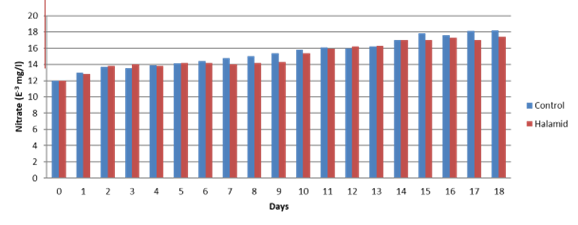In fish farming, we see three main methods of production: open water systems, flow through farm systems and closed circuit systems. The closed systems are land-based (on-shore) and known as recirculating aquaculture systems (RAS).
RAS has been increasingly applied as it is an efficient way to produce high quality fish protein and reduce the pressure on the environment and water quality. Other – more production related – benefits of this system include: better control over biosecurity and quality, no waste streams, shorter production cycles, optimal feeding, better fish health and easy harvesting amongst others.
A complex ecosystem comes with challenges
Designed as a unique engineered ecosystem, RAS typically employ a biofilter – containing certain bacteria species – to control ammonia levels by the removal of nitrogenous waste from excess animal waste and undigested feed. Nitrifying biofilters are a critical component of most RAS and an important determinant of operational success. Research showed that RAS biofilters harbour complex microbial communities whose composition can be affected (Bartelme et al, 2017).
While RAS has many advantages, this complex system also comes with challenges regarding introduction of pathogens from outside when not managed well. If the water quality and biofilters don’t work well, it can have a direct impact on fish health and pathogen growth. An ammonia level of 0.2mg/l can already be irritating to gills of fish. The application of water disinfectants – to support biofilters – is therefore recommended.
RAS requires safe, mild and effective disinfectant
Fish producers around the world are using different disinfection protocols in RAS. But are these different water disinfectants compatible with the biofilters? You simply don’t want to use a disinfectant that is harmful to the beneficial bacteria in the biofilters. This can disrupt the biofilter and hence lead to more problems and loss of money. To reap the benefits of applying RAS aquaculture it is therefore important to apply a product that is safe, quick, simple, effective and doesn’t disrupt the biofilter.
Halamid® is an innovative and fast disinfectant (oxidiser) and has been specifically developed to be powerful and mild at the same time. It eradicates all major pathogens in one application round, while being safe for fish, humans and the environment. Its broad spectrum, high efficacy and compatibility with biofilters makes it the number one choice for use in RAS aquaculture. In addition, this product is non-corrosive, biodegradable and doesn’t lead to resistant bacteria.
Studies show compatibility of Halamid® with biofilter
In a study done by Virginia Polytechnic Institute in the US, Halamid® was tested on its compatibility with biofilters. The study showed that even at a dosage of 20 ppm of Halamid, the nitrate formation (and hence the quality of the biofilter) was maintained (Figure 1).

Working towards a more sustainable growth of aquaculture
Fish production is on the rise and this leads to more RAS aquaculture to be able to produce quality products in an efficient and environmentally friendly way. To support this, we need sustainable, effective and safe biosecurity measures. The combination of the product mode of action (oxidation) and the application (spread over time to present peak concentrations at the biofilter) makes Halamid® ideal for use in RAS and doesn’t affect the biofilter, as shown in this study.
For optimum operational success in RAS aquaculture, choosing a water treatment product that is compatible with biofilters is key. Halamid® is a globally available product. Get in touch to learn more about how Halamid® can help your business move forward.